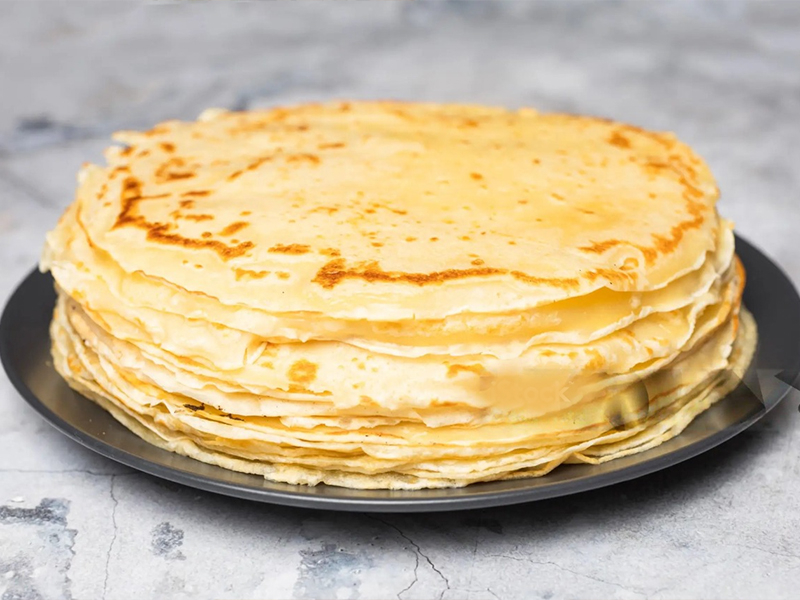Frozen parathas have become a staple in many households, offering the same delectable taste and texture of freshly-made parathas without the extensive preparation time. If you’re new to frozen parathas or looking to add something new to your meal, this guide covers five famous types of frozen parathas that you should definitely try. Plus, we’ll delve into the best combinations for parathas, why people adore aloo parathas, how to use frozen parathas, and why they are a great choice for everyone.
So , let’s start with 5 types of frozen parathas.
Types of Frozen Parathas
1. Plain Parathas
Plain parathas are the quintessential flatbread, loved for their versatility and classic taste. Made from whole wheat flour, they are lightly seasoned and cooked until golden brown. These parathas are a perfect base for various accompaniments, such as curries, chutneys, and even yogurt. They are also an excellent choice for those who prefer a less spicy option.
2. Aloo Parathas
Aloo parathas are favorite and most famous among people around the globe. They feature a delicious filling of spiced mashed potatoes. The mixture usually includes aromatic spices like cumin, coriander, and garam masala, which give the parathas their unique flavor. The soft potato filling and the crispy outer layer make aloo parathas an enjoyable, delicious meal.
3. Gobi Parathas
Frozen Gobi parathas are filled with a flavorful mixture of grated cauliflower and spices. This type of paratha is particularly popular for its slightly crunchy texture and the subtle sweetness of cauliflower. It’s a nutritious option full of vitamins and minerals, making it an excellent choice for people who are concerned about their health.
4. Mix Vegetable Parathas
Mix vegetable parathas are a medley of various vegetables like carrots, peas, beans, and potatoes, all finely chopped or grated and spiced to perfection. This variation is perfect for anyone who want to add more vegetables into their diet without compromising flavor. Each mouthful combines an array of flavors and textures, making it an excellent choice for any sort of meal.
4. Mooli Parathas
Mooli parathas are stuffed with grated radish, often mixed with green chilies and spices. The radish filling adds a pungent, slightly spicy taste that distinguishes mooli parathas from other varieties. They are particularly popular in North India during winter and are often enjoyed with a dollop of butter or yogurt.
Explore: Food storage guidelines UK
Which is the Best Combination for Paratha?
Pairing parathas with the right side dishes can make your meal more appealing. Here are some combinations that work exceptionally well:
- Plain Parathas: Pair with butter chicken, paneer butter masala, or simply with pickles and yogurt for a light meal.
- Aloo Parathas: Best enjoyed with mint chutney, pickles, and a bowl of curd.
- Gobi Parathas: Serve with a tangy tomato chutney or a spicy garlic pickle.
- Mix Vegetable Parathas: Complement with a rich curry like dal makhani or a simple raita.
- Mooli Parathas: Pair with fresh yogurt and green chili pickle for an authentic experience.
Why Do People Like Aloo Paratha?
Aloo parathas are beloved for several reasons:
- Comforting Flavor: The combination of spiced mashed potatoes tucked inside a crispy paratha evokes a sense of comfort and nostalgia for many.
- Versatility: They can be enjoyed at any time of the day, whether it’s for breakfast, lunch, or dinner.
- Ease of Preparation: Even when made from scratch, aloo parathas are relatively easy to prepare compared to other stuffed parathas.
- Universal Appeal: The flavors are mild yet flavorful, making them a hit among both children and adults.
How to Use Frozen Parathas?
Using frozen parathas is simple and convenient:
- Direct Heating: Remove the paratha from the freezer and place it directly on a preheated skillet or tava. Cook for 2-3 minutes per side over medium heat, or until golden brown.
- Microwave Heating: Some brands offer microwave-friendly options. Place the paratha on a microwave-safe plate and heat for 1-2 minutes, flipping halfway through.
Oven Baking: For a crispier texture, preheat your oven to 350°F (175°C). Place the paratha on a baking sheet and bake for 5-7 minutes, flipping once..
Why Frozen Parathas Are Good?
Frozen parathas offer numerous advantages:
- Convenience: They save time and effort, making them perfect for busy lifestyles.
- Consistency: Each paratha is crafted to ensure consistent taste and texture, so you get the same quality every time.
- Long Shelf-Life: Frozen parathas can be stored for months, ensuring you always have a quick meal option available.
- Diverse Options: Frozen parathas cater to different tastes and preferences with varieties ranging from plain to stuffed.
Conclusion
In conclusion, frozen parathas are a fantastic addition to any kitchen, providing delicious and convenient meal options. From the classic plain paratha to the flavorful parathas, there’s a type of frozen paratha for everyone. Explore these varieties and find your favorites today!
FAQ’s
What Paratha goes well with?
Parathas are versatile and go well with a variety of dishes. Here are some popular options to enjoy with parathas:
- Curries: Parathas pair excellently with various curries such as butter chicken, paneer tikka masala, chole, or dal makhani. The combination of soft parathas and flavorful curry is a classic choice.
- Chutneys and Pickles: Parathas taste great with a side of tangy and spicy chutneys like mint chutney, tamarind chutney, or mango pickle. These spices add an extra kick to the meal.
- Yogurt: A dollop of fresh yogurt or raita is a refreshing accompaniment to parathas, balancing out the richness of the bread.
- Vegetable Stir-Fries: Pairing parathas with vegetable stir-fries such as aloo gobi, bhindi masala, or mixed vegetables adds a healthy and satisfying element to the meal.
- Egg Dishes: If you enjoy eggs, consider having parathas with egg bhurji, masala omelette, or egg curry for a protein-rich meal.
- Kebabs and Tikkas: Parathas make a delicious combination with kebabs or tikkas, whether they are made with meat, paneer, or vegetables.
What Paratha are called in English?
In English, Paratha is commonly referred to as a type of flatbread.
What Paratha is made from?
Parathas are typically made from whole wheat flour, water, salt, and ghee or oil. The dough is kneaded and rolled out into thin rounds, which are then cooked on a griddle with ghee or oil until they are golden brown and flaky. Some variations may include additional ingredients like yogurt or spices for added flavor and texture.
What are the 5 types of Frozen Parathas?
- Plain Parathas
- Aloo Parathas
- Gobi Paratha
- Mix Vegetable Paratha
- Mooli Paratha
Is Frozen Paratha good for health?
Frozen parathas can offer convenience and a quick meal solution for busy individuals. They eliminate the need for preparation from scratch and can be a time-saving option for those with hectic schedules. With good portion management and careful selection of healthier options, frozen parathas may be an affordable and enjoyable meal option.
Which is the most famous Paratha?
The Aloo Paratha is one of the most famous and popular types of paratha. This stuffed flatbread filled with a spiced potato mixture is loved for its delicious flavor and comforting appeal. Its widespread popularity makes it a beloved choice among paratha enthusiasts.
Which Paratha is commonly used?
Plain Paratha is a commonly used type of paratha that serves as a versatile and staple choice in many households and restaurants. Its simple yet delicious nature makes it a go-to option that can be enjoyed with various accompaniments or fillings, catering to a wide range of preferences and culinary delights.
How many types of paratha are there?
Parathas come in various shapes such as round, heptagonal, square, or triangular. Common stuffed varieties include mashed spiced potatoes (aloo paratha), dal, cauliflower (gobi paratha), and minced lamb (keema paratha).
At what temperature should we freeze frozen parathas?
Frozen parathas should be stored in the freezer at a temperature of 0°F (-18°C) or below to maintain their freshness and quality for an extended period. This low temperature helps preserve the flavor, texture, and overall integrity of the parathas while they are frozen.
For more mouth-watering insights about Frozen Foods, stay tuned to our blog and discover the world of frozen foods. Happy eating!




